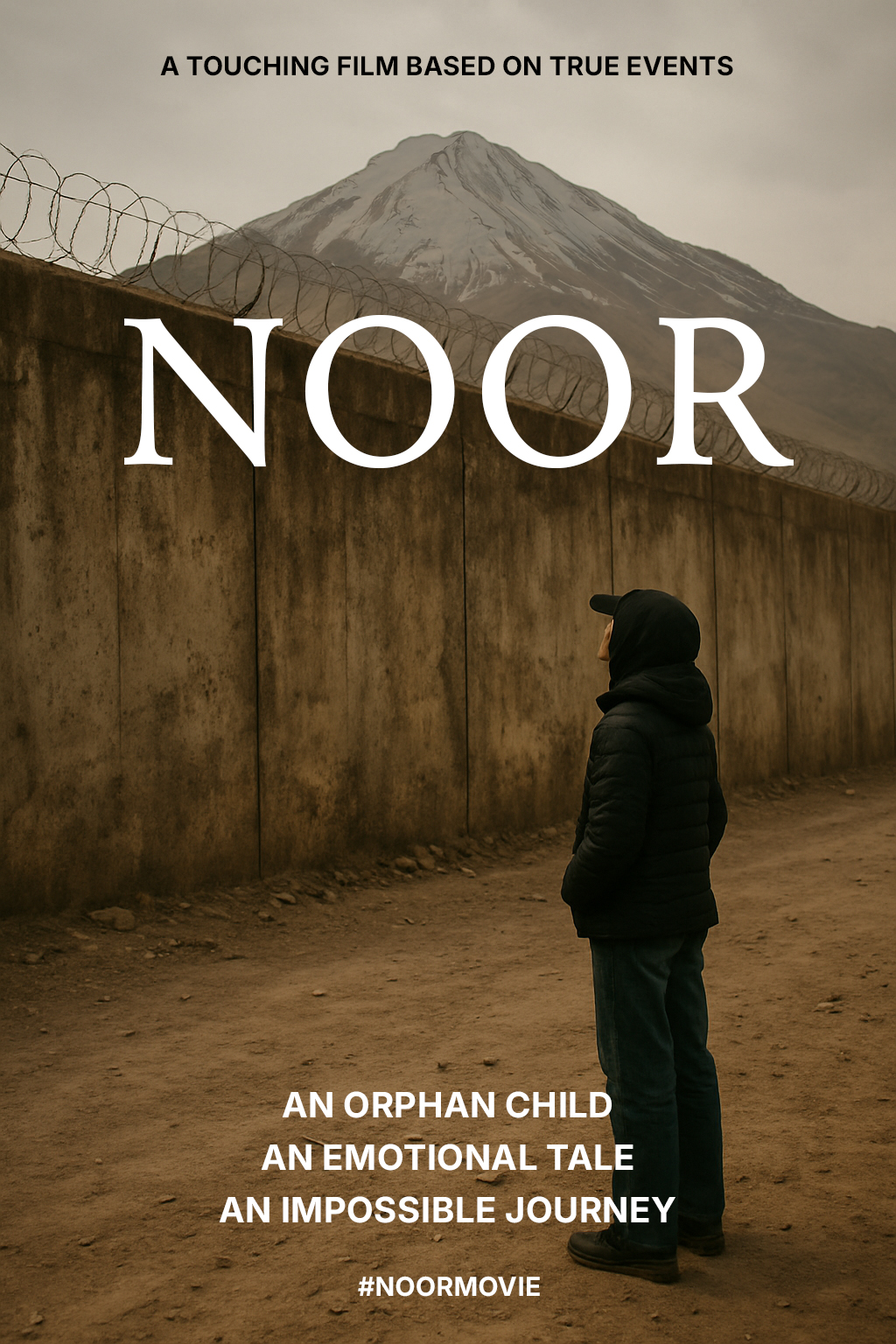Noor

Synopsis
The opening scene begins on a crystalline, frozen lake, near a dark forest under a display of the spectacular Northern Lights of Norway. A man and woman are cross-country skiing along the edge of the trees when the woman stops to adjust her skis. She hears whimpering and soft cries and discovers the bodies of two children nearby, motionless, nearly frozen. They are clearly refugees, lost and alone. The couple rushes to their aid and calls for help. One child survives.
Act I: We continue ten years later. The couple, who endured many miscarriages, unable to have children, have fostered the young girl they rescued. Young Noor has grown into a lovely, vulnerable girl and become a typical teenager with a happy home life, friends, sports and school activities. Except one thing. The trauma of her early years as a refugee, loss of family members and issues of abandonment plague her nights and nightmares. With the love of her foster parents, she overcomes the painful memories. All in all, her life is fairly normal and happy, until one day when she learns that her biological mother may still be alive and living in a refugee camp. Overcome by emotions, she makes the bold and unwise decision to find her.
Act II: The first half follows Noor as she crosses Europe alone. To hide her identity, she disguises herself as a boy. Denmark, Germany, Switzerland, then Italy. She suffers loneliness most, but the dangers are relatively minor compared to what awaits her in the second half when she crosses the Adriatic stowed away on a smugglers’ boat. She narrowly escapes groups that roam the Balkans: bounty hunters, vigilantes, corrupt border guards, bandits, white slavers, and other lawless refugees. And hunger, exhaustion and cold. Her journey becomes increasingly difficult the farther south she travels.
Act III: Finally Noor arrives at the Turkish border; the refugee camp is nearly in sight. But more obstacles block her path – walls and barriers. Literally, an enormous wall hundreds of miles long stops her. At last she reaches the camp and confronts the woman – and the woman’s 10-year-old daughter. But the reality of their life and hers becomes obvious.
This is Noor’s story. Although it is not hers alone. Unfortunately. At this time UNHCR reports that there are currently 117 million refugees classified as “forcibly displaced”. And nearly half, 47 million, are children under 18. Often alone. Homeless, stateless, at the mercy of unscrupulous predators.
Noor’s story is an all-too-universal one as others bear witness; the Rohinga and Uyghers in China and Southeast Asia, Africans crossing the Mediterranean, South Americans braving the Darién Gap – and countless more – experience the same plight. And their stories are rarely portrayed in the media beyond the numbers, mere statistics, not the reality of their lives, their loss, their pain.
From the story of Exodus in the Bible (and certainly even before) to the Vietnamese boat people in the 20th century – and every millennium in between – exile, flight, and refuge are the reality for millions of human beings across the globe and throughout time. To quote Warsan Shire: “No one leaves home unless home is the mouth of a shark.”
Comps: Hanna meets The Wizard of Oz (with homage to A Thousand Splendid Suns)
Novel in progress

